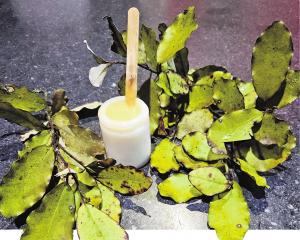
The London launch of Sgt. Pepper’s Lonely Hearts Club Band in May 1967 was a musical and fashion landmark. While the clothes worn by all four Beatles startled the journalists and disc jockeys, John Lennon stole the show. He wore a green, frilly, flowered shirt, maroon corduroy trousers, canary-yellow socks, corduroy shoes — with two particularly unusual additions. One was a leather sporran, the other an Afghan sheepskin coat, worn with the fur inside and the skin outside, which was tanned yellow and embroidered with big red flowers down its front and sleeves.
They had a resurgence inspired by Penny Lane’s character in the 2000 film Almost Famous and remain a favourite among lovers of bohemian fashion on Instagram.
The craze for these coats transformed where and how they were made and what they looked like. Yet it could only happen because Afghanistan’s relationship with the rest of the world was changing.
SHORT, MEDIUM OR VERY LONG
Afghan coats traditionally came in three forms — sleeveless or short-sleeved hip-length vests known as pustinchas; knee-length, long-sleeved coats known as pustakis; and ankle-length cloaks called pustins.
In a gendered division of labour, men cured the skins, tanned them yellow with the rinds of pomegranates, cut them into pieces and sewed them together, while women and girls embroidered them with geometric and floral designs, usually in red or yellow. The skins were occasionally bear, fox or goat, but usually karakul (a long-haired breed of sheep).
Although often written about as if only men wore them, women did too, and they were such ubiquitous winter-wear they were considered Afghan national dress.
In 1946, Maynard Owen Williams — the National Geographic Society’s first field correspondent — considered the pustin to be "the ultimate in masculine chic". The archetypal Afghan man, he wrote, was "clad in red-embroidered sheepskin".
Their prime source was Ghazni, south of Kabul. In 1955, British archaeologist Sylvia Matheson found "one shop after another offering nothing but pustin" there.
Matheson opted for a brown-furred pustincha that was "enchanting, the yellow skin entirely covered in closely stitched flowers of pillar-box red, with here and there a spot of periwinkle blue".
HIPPIE COMMERCE
Many more foreigners visited from the early 1960s as Afghanistan embarked on a programme of modernisation that saw significant numbers of women in the cities unveil and find new forms of paid work.
Most Western visitors were hippies who travelled overland through Kabul to Kathmandu.
Their prime destination was Chicken St in the Shahr-e Naw, a garden suburb close to the city centre, which was the most westernised part of Kabul. Once a domain of poultry vendors, Chicken St became a tourist strip lined with antique shops, clothing, embroidery and jewellery stores, and carpet dealers. In Across Asia on the Cheap, the first Lonely Planet guide, published in 1973, Tony Wheeler described Chicken St as "the freak centre of Kabul".

Richard Neville, the Australian of Oz Magazine fame, who bought a pustincha while travelling overland from Sydney to London in 1965, encouraged this commerce. In Play Power, his 1970 manifesto and manual for hippies, Neville recognised the larger exchange of dress occurring in Afghanistan and other countries on the Hippie Trail. He advised: "Sell your Western-styled jeans in Nepal, and your long leather boots in Morocco. Once you could make 500% profit bringing back sheepskin jackets from Kabul, and you can triple your money with antique robes."
ROCK ‘N’ ROLL
Craig Sams, a young American who also travelled through Kabul in 1965 before settling in London, became a supplier.
His prime outlet was Granny Takes a Trip — London’s weirdest, most extreme, most exotic, hippest boutique — on the King’s Rd in Chelsea. At first, Granny Takes a Trip sold Victorian clothes, often modified to create a slightly modern feel. By 1967, when it began stocking pustinchas, its range included Charleston dresses of the 1920s, Victorian bustles from the 1880s, Boer War helmets, African fezes, Arab headdresses and Chicago gangster suits.
Granny Takes a Trip was one of the first boutiques not to differentiate male from female dress. But it was men, particularly rock and pop stars, who brought Afghan jackets and coats to public attention.
Jimi Hendrix wore his orange-red, brocaded, sleeveless pustincha over an iridescent purple shirt with huge flared sleeves in one of the first all-star rock events in England, at the Kensington Olympia in London. Syd Barrett, of Pink Floyd, and Pete Townshend, of The Who, also wore them on stage.
All four Beatles wore pustinchas inside-out in their film of the Magical Mystery Tour and on the album’s cover. From across the Atlantic, it appeared to Life in 1968 that pustinchas had been "launched last season in England by the Beatles and their followers".
By 1969, many more pustinchas were being worn outside Afghanistan than within it.
The enduring audience was downmarket — their iconic status confirmed in 1971 by artist Ronald Searle in a cover drawing for the New Yorker of a long-haired, bearded, barefoot hippie with flared trousers, shoulderbag, headband and pustincha.
Their international embrace fuelled new enthusiasm for Afghan clothing among some of Kabul’s elite who accepted that women should unveil but wanted Afghans to fight against foreign influences and keep Afghan customs alive.
Kabul also replaced Ghazni as the Afghan centre of pustincha production.
In 1970, when demand surged not only in the United States and Europe but also in Japan, one company employed 160 embroiderers who completed 30 to 40 coats each day. Another company built a hostel for its 250–300 embroiderers, primarily widows and young women from the provinces where there were many skilled needleworkers.
As these coats spread round the world, they fuelled awareness of Afghanistan, even if not quite as much as one Kabuli dealer boasted to the New York Times "Before no-one remembered Afghanistan," he said. "Now everybody remembers."
- This essay is an edited extract from Two Afternoons in the Kabul Stadium: A History of Afghanistan Through Clothes, Carpets and the Camera, published by Text Publishing. Tim Bonyhady is an emeritus professor at Australian National University.












